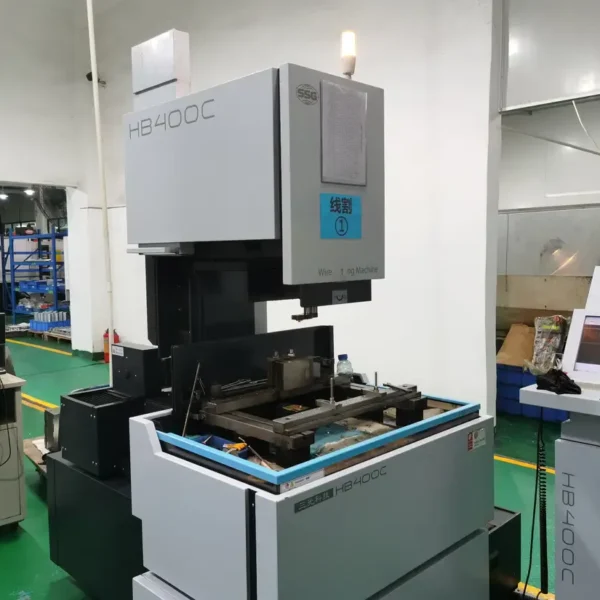
Medium Wire-Cut EDM
Core Advantages: Dual Breakthroughs in Efficiency and Precision
1. Composite Wire Feed Mode: Innovative Design Integrating Roughing and Finishing
Medium EDM employs a composite wire feed strategy of “high-speed roughing + low-speed finishing”:
Roughing Stage: Molybdenum wire operates at 8-12 m/s high speed, combined with high-peak current and long pulse width parameters, rapidly removing material. Cutting efficiency improves by 15%-20% compared to traditional high-speed EDM.
Finishing Stage: Automatically switches to 1-3m/s low-speed wire feed. Through multiple passes (up to 7), it progressively corrects errors, achieving surface roughness as low as Ra0.65μm and machining accuracy of ±0.003mm—approaching slow-speed wire cutting standards.
Technical Principle: By dynamically adjusting wire feed speed and discharge parameters, material deformation and electrode wire wear are minimized. This achieves “single setup with multi-level precision refinement,” significantly reducing repeat positioning errors.
2. Intelligent Control System: Evolution from Open-Loop to Full-Closed-Loop
The medium-speed wire cutter features a full-closed-loop CNC system integrating AC servo motors, high-precision encoders, and pitch compensation:
Dynamic Parameter Adjustment: Automatically optimizes pulse width, pulse interval, power transistor count, and other parameters based on machining stages to ensure cutting stability.
Error Compensation: Continuously monitors electrode wire tension and position, correcting lead screw wear errors via pitch compensation algorithms, boosting long-term precision retention by 40%.
Compatibility Expansion: Supports 4-axis interpolation, bevel cutting, and machining of upper/lower irregular surfaces to accommodate complex curved parts.
3. Cost-Effectiveness: The Ultimate Value Choice
Equipment Cost: 50%-60% lower than slow-wire systems, saving over 30% compared to mid-range imported equipment.
Operating Cost: Electrode wire wear reduced to 0.02mm/1,000 cuts, working fluid replacement extended to 200 hours, lowering per-part processing cost by 25%.
Efficiency gains: Average machining efficiency exceeds high-speed wire cutting by 30%, outperforms slow wire cutting by 2-3 times, and shortens delivery cycles by 30%-50%.
Application Scenarios:
1. Mold Manufacturing: From Rough Blanks to Precision Molds
Stamping Dies: Processes intricate cavities and narrow slots with surface roughness Ra ≤ 1.6μm, eliminating burrs and cracks inherent in traditional high-speed wire cutting.
Injection molds: Achieves high-precision cutting of microstructures (e.g., phone casing clips) with dimensional tolerances controlled within ±0.005mm.
Die-casting molds: Processes high-hardness materials (e.g., quenched steel above HRC50), reducing heat-affected layer thickness to below 5μm through multiple passes.
2. Aerospace: Addressing dual challenges of lightweighting and high strength
Turbine blades: Machines cooling holes (diameter 0.3-1mm) with aspect ratios >15:1 and wall roughness Ra≤0.8μm to meet engine high-temperature requirements.
Structural components: Cuts difficult-to-machine materials like titanium alloys and superalloys. Low-speed finishing minimizes micro-cracks, increasing material utilization by 10%.
3. Electronic Components: Precision Demands for Miniaturization and High Reliability
Connectors: Machining precision terminals with 0.2mm pitch, dimensional consistency ±0.002mm, reducing contact resistance and signal loss.
Sensors: Cutting brittle materials like stainless steel and ceramics without recast layers, ensuring device sensitivity and stability.
